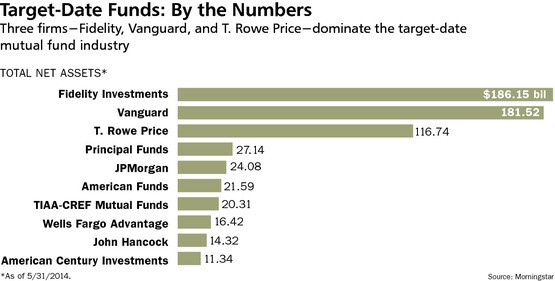Morningstar Shakes Up Its Mutual Fund Ratings SystemKiplinger
Post on: 23 Июль, 2015 No Comment

The czar of star ratings unveils a new system that it hopes will better identify future winners.
Anyone who has ever contemplated buying a mutual fund has almost certainly seen Morningstar ‘s star ratings. But now the Chicago research firm has launched what it calls analyst ratings to address the most common criticism of the star ratings — that they look backward rather than forward. Our star ratings look at past performance and that’s important, but it’s not always the best predictor, says Karen Dolan, Morningstar’s director of fund analysis. Our analyst ratings allow us to view performance in a broader context.
SEE ALSO: Our Guide to Mutual Funds
The new ratings, which will designate recommended funds with gold, silver or bronze awards, don’t replace the 28-year-old star ratings; they’re designed to coexist side-by-side. Funds that don’t look like future standouts will get neutral or negative ratings, reflecting analysts’ views that those funds will prove to be either nothing special or poor performers.
The new system is the latest attempt by fund researchers to help investors wade through a maze of choices. More-sophisticated analysis is needed largely because there are so many funds to choose from. According to the Investment Company Institute, there are more than 7,600 different funds — and upward of 21,000 fund options, when you include different asset classes (which usually reflect varying fee structures).
Advertisement
That’s such a dizzying number of choices that the typical investor simply follows the stars — Morningstar’s star ratings, that is. Over the past ten years, investors have poured $3 trillion into four- and five-star funds, while pulling $1 trillion out of one- and two-star funds. But because the star ratings are predicated on three-, five- and ten-year results, pouring money into a five-star fund equates to performance-chasing. And investing through a rearview mirror can blind investors to the potential risks ahead.
Analyst ratings will be based on what Morningstar calls the five pillars of performance, only one of which reflects how the fund has done in the past. The remaining factors are fees (the lower, the better); the people running the fund, both at the management and parent-firm levels; and the process that managers use to choose investments.
Star and analyst ratings can differ significantly. For example, Clipper (symbol CFIMX ) is a large-company stock fund with long-term returns so mediocre that it scores just two stars with the traditional formula. But Morningstar analysts think that Clipper’s managers, Chris Davis and Ken Feinberg, are talented; that the fund’s management company is a good steward of investor assets; and that the investment process is likely to result in better future results. Thus, next to Clipper’s two stars is a gold medal.
All Morningstar users can see the new (and old) ratings, but only users who pay for premium services (starting at $189 a year) can see the analysts’ reasoning. Just 350 funds have analyst ratings so far, but Morningstar hopes to have new ratings for 1,500 mutual funds, holding 75% of investor assets, by year-end 2012. It also launched analyst ratings for closed-end funds last January, and it now covers about 90 such funds, accounting for nearly 40% of closed-end assets.
What Else Is Out There

Other investment services that offer qualitative fund ratings include Standard & Poor’s. Value Line and Lipper.
Standard & Poor’s ratings, which are also based on a one- to five-star formula, differ from Morningstar’s in that they attempt not only to rate the managers and fund structure but also to look at the specific securities owned by each fund. S&P uses its stock and bond analysts to assess each fund’s holdings. S&P then rates funds based on its best guess of how each fund’s portfolio will hold up, given S&P’s expectations for the economy and different industry sectors. But the ability of an individual investor to obtain these ratings hinges on whether the investor’s adviser or brokerage firm subscribes. The reports are generally provided through these second parties — either free or for a fee — not through S&P itself.
Value Line flips the scoring system to conform with its well-known stock-rating system in the Value Line Investment Survey. The funds that score the highest at Value Line get a rating of one; those considered the least timely get a five. Funds are rated on a bell curve in relatively narrow categories — stock funds are broken into general, special, international, partial, and so on. Value Line charges $116 to those who subscribe to its Fund Advisor service online. Those who also want a paper copy pay $199 annually.
One shortcoming of the Value Line fund-rating system is that it does not account for costs (except indirectly, to whatever degree costs detract from a fund’s performance). That can lead to some misleading results when considering load funds that charge one-time fees that are not reflected in the fund’s operating costs. Our rating system tends to work better for no-load funds than for load funds, says Gregg Brewer, Value Line’s director of research. In addition, Value Line’s ratings focus on a somewhat shorter time span than Morningstar’s ratings. Value Line looks at performance over stretches of one, three and five years, while Morningstar considers performance for periods as long as ten years.
Lipper uses a tool kit approach to rating funds, says research director Jeff Tjornehoj. Lipper’s ratings are based on total return, the consistency of returns, how well the fund has preserved investors’ capital, tax efficiency (which isn’t in the least bit relevant for money in tax-deferred accounts), and expenses. Investors choose which of these five criteria are most important to them when looking up the rating service’s fund leaders, Sorting by, say, consistency of return among equity-income funds allows you to view a listing of dozens of funds with top ratings in that category (while seeing how funds score in other categories, too). These ratings are free and can be found at Lipper Leaders .
Experts at all the rating services say it’s important that investors use the ratings the way they’re intended — to narrow investment choices down to a manageable number to research more thoroughly. The idea of a ranking system is to digest a large amount of information quickly, says Brewer. The fund you choose still needs to fit your investment strategy and temperament. The ratings are a tool to narrow the field. You still have to do some homework.














